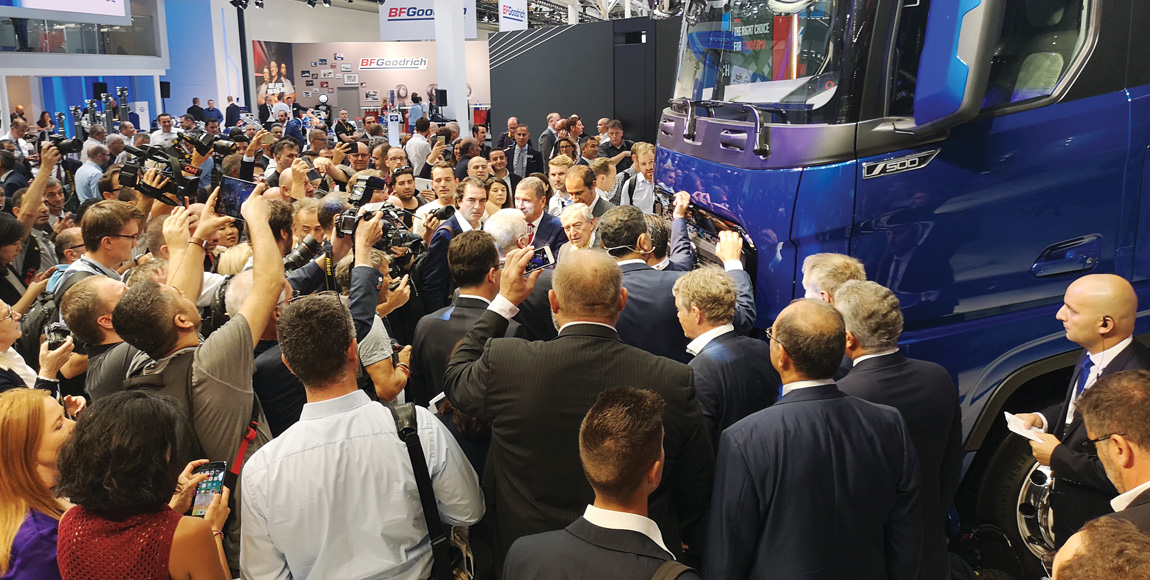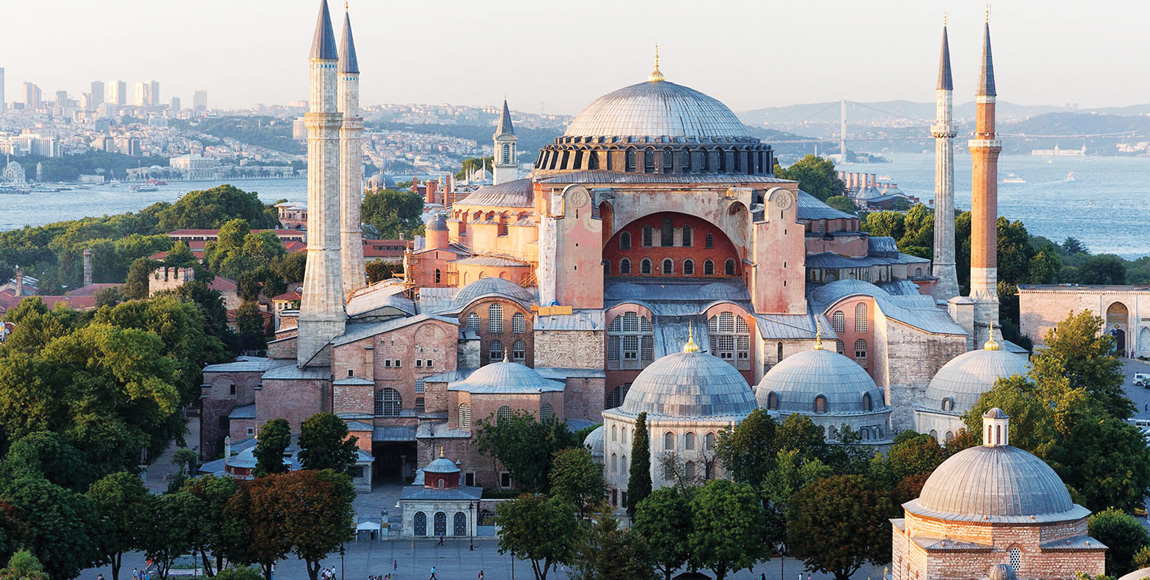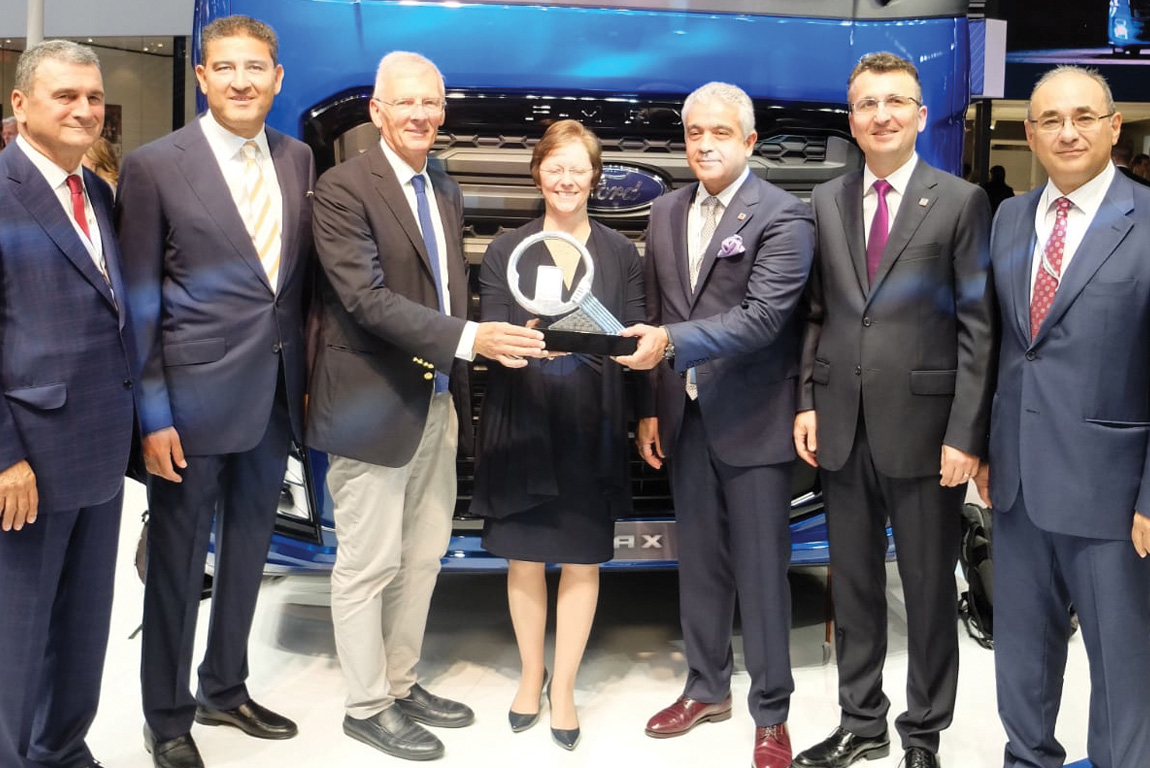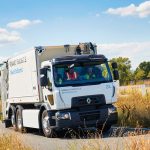Hail the F-Max, the Hagia Sophia of trucks!

By now you will have heard the news: the F-Max from Ford Trucks is the 2019 International Truck of the Year (IToY)! This announcement caused huge waves at the IAA last month … IToY has traditionally been dominated by the so-called Seven Sisters (the seven big European companies, namely Mercedes-Benz, MAN, Volvo, Scania, Renault, Iveco and DAF). The last time that the award was won by an “outsider” so to speak was back in 1982 – when the Ford Cargo took the laurels.
Accordingly, the choice was interesting – and somewhat controversial. However, having spent time behind the wheel of the F-Max with the rest of the IToY jury, I can assure you that the award was most deserving. The F-Max is a truly terrific truck.

I drove the F-Max in Istanbul, which happens to be home to yet another Turkish icon: Hagia Sophia, one of the Seven Wonders of the Medieval World. While there, it occurred to me that there are many similarities between the truck and the church. Allow me to explain…
First, there is the development time. There have actually been three Hagia Sophias. The first was constructed in 360 AD, and then burned down after a public riot. The second was constructed in 415 AD.
Then it was demolished in 532 AD, after a public riot. (It seems the Turks did a lot of rioting back then.) So, for the purpose of this article (and because it’s the only Hagia Sophia that is still standing) I will refer to the third church, which was built by a chap called Emperor Justinianos.
He commissioned the construction of the church, which was completed in just five years, opening for worship on December 27, 537. Five years is a remarkably short time for construction of a structure such as Hagia Sophia. Mostly, it takes much, much longer. Take, for instance, Barcelona’s Sagrada Familia. Work started in 1882 and it’s still not complete.
Now let’s swing from churches back to trucks. What’s interesting with the F-Max is that it was also developed in a remarkably short time: five years, exactly like Hagia Sophia. Yet, just like the biggest church constructed by the East Roman Empire, this truck is something quite special.

Let’s start out by the most obvious – and least important aspect to truckers: the looks. Hagia Sophia is quite magnificent. So, too, is the F-Max in its own way. Lots of people have commented that it looks quite Scandinavian. Those people are spot-on right. It does look Nordic – both inside and out. This is not a coincidence. The designers at Ford Trucks wanted a clean look – and they most certainly achieved it.
I think that the exterior is stylish and elegant and, as I discovered on my test drive in Turkey, fellow truckers agree. Wherever I drove, I was greeted by enthusiastic hooting, the thumbs-up and (shriek) fellow truckers taking pics of “my” F-Max. The shriek is there because they took the pics while driving their (lesser) trucks.
I also had a madman in a Fiat pull in front of me and then stop – dead – in order to take pics of the F-Max. Luckily the brakes on the truck are quite brilliant, otherwise I would have driven right over the trigger-happy Turk and his Fiat too.
Similarly, the interior is clean and attractive. However, this truck is much more than a pretty face. Like Hagia Sophia (its magnificent interior also boasts superb acoustics), the F-Max is enormously practical.
I really like the walk-through cab and the 2 160 mm floor-to-ceiling height. The storage areas are absolutely terrific, because they are really usable (you don’t battle to reach into anything). The designers have even included overhead bins (just like the storage bins you find on aircraft).
The instrumentation is clear and easy to navigate. There’s also an easy-to-use 7,2-inch LCD multimedia touchscreen, which displays anything and everything from tyre pressures and axle loads to the driver’s performance.
Equally impressive is the lack of cabin noise. I was privileged to be able to tour Hagia Sophia at night. It’s incredibly serene then. The interior of the F-Max is similar; it’s surprisingly quiet. It feels much like a passenger car.
Even the engine is quieter than expected. The F-Max is equipped with an in-line six-cylinder, 12,7-litre, Ford Ecotorq Euro-6 engine rated at 373 kW (500 hp) in combination with the ZF 12-speed Traxon automatic gearbox.

There’s more than enough power and torque (2 500 Nm) on offer. I easily soared past lots and lots of trucks on steep gradients during my test drive (my F-Max was loaded to 40 t, just in case you’re wondering).
The chaps from Ford Trucks told me that, in testing, they’d achieved 27 l/100 km. Of that I have no doubt. I didn’t even come close to that. However, truth be told, I’m probably the least economical truck driver in the world (patience is not my strong point).
Like the trucks that we drive from the Seven Sisters, the F-Max is loaded with technology and safety features. It offers full connectivity as well as a lane-departure warning system, active emergency brake system, speed limiter, adaptive cruise control, Eco-Roll, GPS-based predictive cruise control functions, an electronic stability program and hill-launch assist.
Should the Seven Sisters be worried about this newcomer? I would say so. Historians write that, on Hagia Sophia’s opening day, Emperor Justinianos entered the temple and said, “My Lord, thank you for giving me chance to create such a worshipping place,” and followed with the words “Süleyman, I beat you,” referring to Süleyman’s (King Solomon’s) temple in Jerusalem.
One cannot help but wonder if the chaps from Ford Trucks could be uttering these words one day…
Published by
Charleen Clarke
focusmagsa




